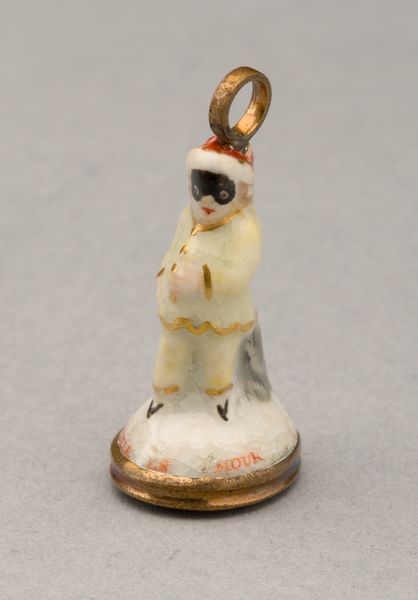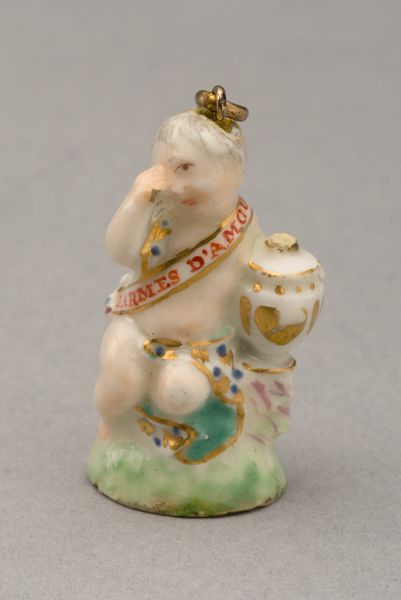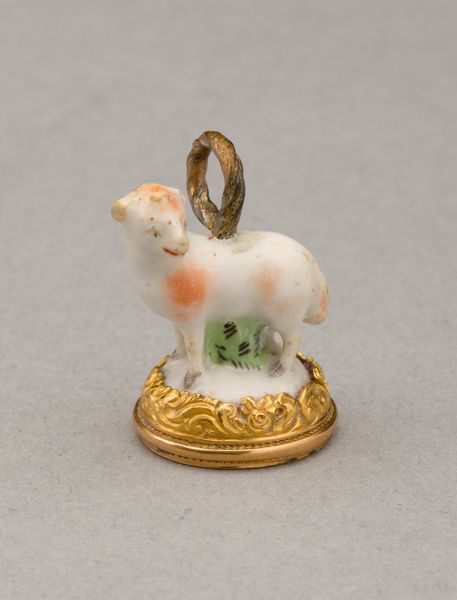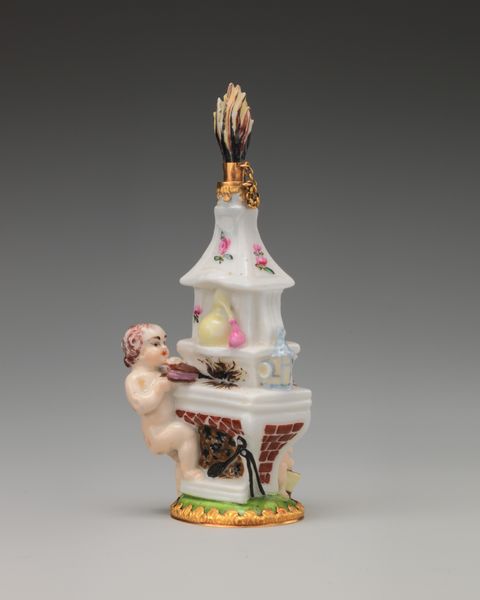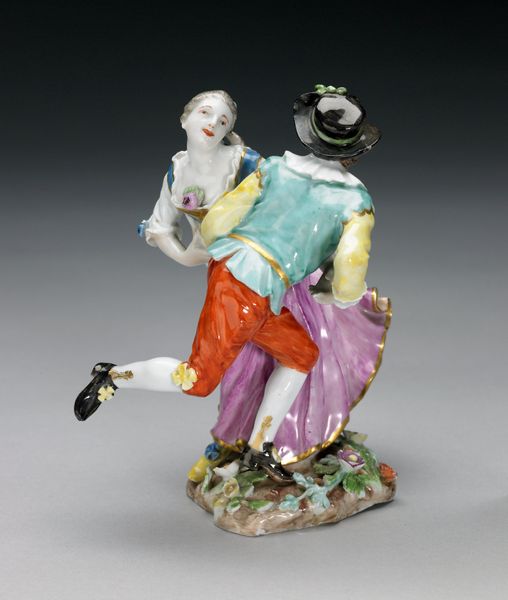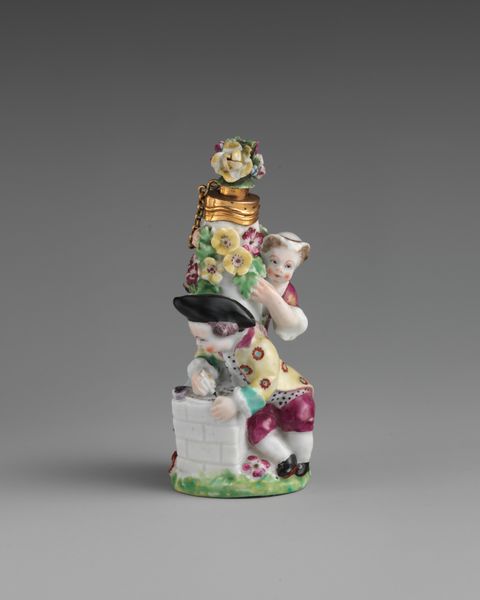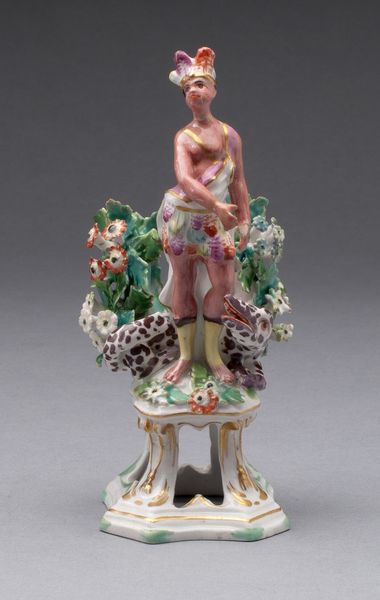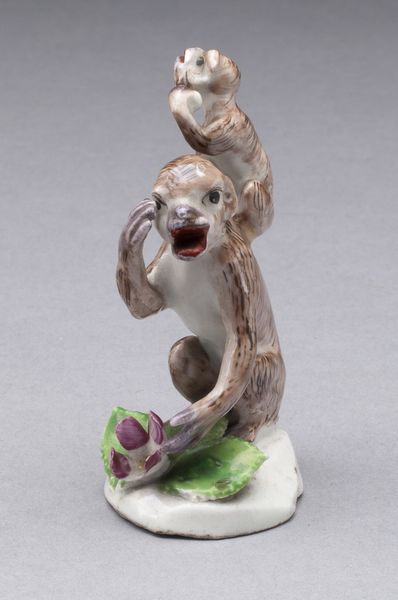
ceramic, porcelain
#
ceramic
#
porcelain
#
decorative-art
#
rococo
Dimensions: H. .9 cm (15/16 in.)
Copyright: Public Domain
Curator: Well, here we have a "Seal," crafted sometime between 1750 and 1770. It's porcelain, and a charming example of Rococo decorative art now held by the Art Institute of Chicago. Editor: It's quite delicate looking, isn't it? Immediately evokes a sense of frivolity and refined taste. A pastel daydream made solid. Curator: Indeed. These small, ornate objects often held significant weight, literally and figuratively. A seal wasn't just decorative; it authenticated documents. Imagine the power residing in such a tiny, beautiful object. This particular piece displays a creature of the sea and one might question if it represents certain mythological narratives or simply speaks to status and appreciation for the beauty of marine life during this time period. Editor: It brings to mind the elaborate court culture of the 18th century – a world of powdered wigs, formal gardens, and exquisite craftsmanship, yes, but also, hidden beneath, intense political maneuvering and shifting alliances. The Rococo style itself was arguably a visual manifestation of that tension: extravagance masking uncertainty. What is most important, this item tells a small tale and provides visual data on how those in the 18th Century would represent stories. Curator: An insightful reading. The playful form of the seal belies the serious function it served, highlighting the societal codes embedded within seemingly innocuous objects. Think of the mythology and legend of seals in relation to authority, wisdom and secrecy. The fact that porcelain and the Rococo style, overall, had already traveled all throughout Europe during this time says a lot about not only accessibility, but trade as well. Editor: Right. We often focus on grand historical narratives, but it’s objects like this—intimate, beautifully made, and deeply symbolic—that give us a palpable sense of what life felt like in a different era. It reminds us that even small-scale design contributes to significant aspects of social and art history. Curator: Absolutely. Each element, from its materiality to its imagery, offers a thread to the wider social, economic and political landscape of its time. And reminds us about ourselves in the now as well.
Comments
No comments
Be the first to comment and join the conversation on the ultimate creative platform.
